Welcome to the Amira-Avizo Software Use Case Gallery
Below you will find a collection of use cases of our 3D data visualization and analysis software. These use cases include scientific publications, articles, papers, posters, presentations or even videos that show how Amira-Avizo Software is used to address various scientific and industrial research topics.
Use the Domain selector to filter by main application area, and use the Search box to enter keywords related to specific topics you are interested in.
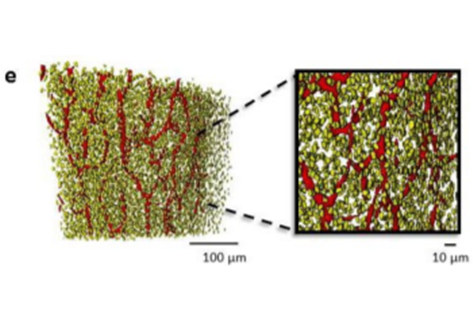
Cortical bone is permeated by a system of pores, occupied by the blood supply and osteocytes. With ageing, bone mass reduction and disruption of the microstructure are associated with reduced vascular supply. Insight into the regulation of the blood supply to the bone could enhance the understanding of bone strength determinants and fracture healing. Using synchrotron radiation-based computed tomography, the distribution of vascular canals and osteocyte lacunae was assessed in murine cortica... Read more
J.A. Núñez; A. Goring; B. Javaheri; H. Razi; D. Gomez-Nicola; E. Hesse; A.A. Pitsillides; P.J. Thurner; P. Schneider; E. Clarkin
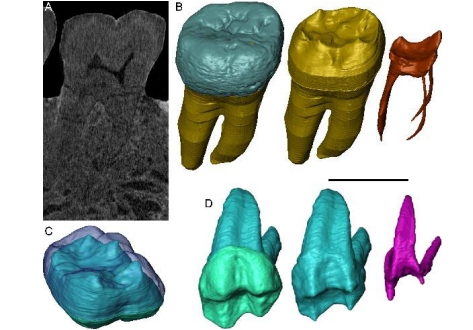
Exploring hominin and non-hominin primate dental fossil remains with neutron microtomography
Fossil dental remains are an archive of unique information for paleobiological studies. Computed microtomography based on Xray microfocus sources (X-µCT) and Synchrotron Radiation (SR-µCT) allow subtle quantification at the micron and sub-micron scale of the meso- and microstructural signature imprinted in the mineralized tissues, such as enamel and dentine, through highresolution “virtual histology”. Nonetheless, depending on the degree of alterations undergone during fossiliza... Read more
Clément Zanolli, Laboratory AMIS, UMR 5288, University of Toulouse III - Paul Sabatier, France, and al.
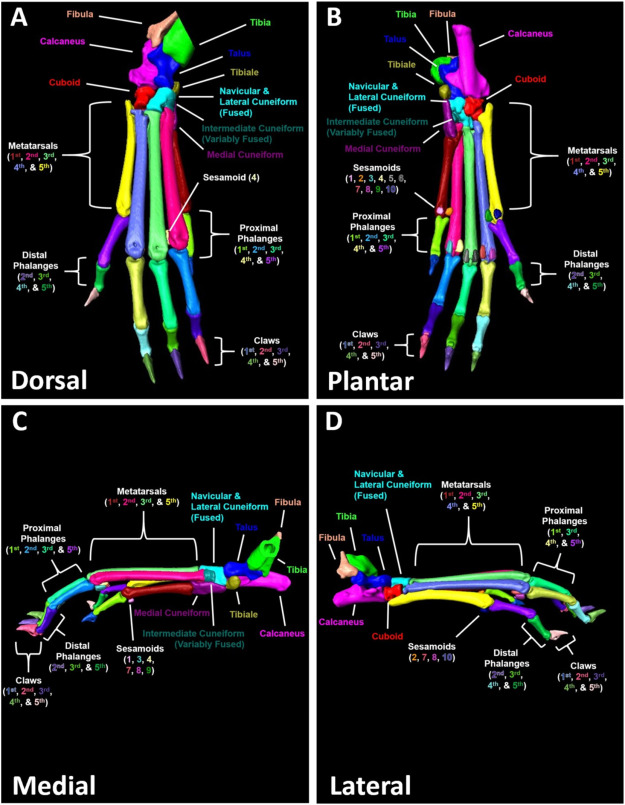
A high-throughput semi-automated bone segmentation workflow for murine hindpaw Micro-CT datasets
Micro-computed tomography (μCT) is a valuable imaging modality for longitudinal quantification of bone volumes to identify disease or treatment effects for a broad range of conditions that affect bone health. Complex structures, such as the hindpaw with up to 31 distinct bones in mice, have considerable analytic potential, but quantification is often limited to a single bone volume metric due to the intensive effort of manual segmentation. Herein, we introduce a high-throughput, user-friendl... Read more
H. Mark Kenney, Yue Peng, Kiana L.Chen, Raquel Ajalik, Lindsay Schnur, Ronald W.Wood, Edward M.Schwarz, Hani A. Awad

For decades, clearing and staining with Alcian Blue and Alizarin Red has been the gold standard to image vertebrate skeletal development. Here, we present an alternate approach to visualise bone and cartilage based on X-ray microCT imaging, which allows the collection of genuine 3D data of the entire developing skeleton at micron resolution.
Our novel protocol is based on ethanol fixation and staining with Ruthenium Red, and efficiently contrasts cartilage matrix, as demonstrated in wh... Read more
Simone Gabner, Peter Böck, Dieter Fink, Martin Glösmann, Stephan Handschuh
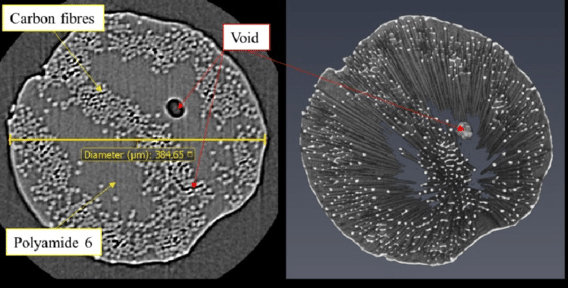
Continuous carbon fibre-reinforced polymer (CCFRP) composites have been increasingly used in airframes and other high-end industrial products due to their superior mechanical properties such as high strength-weight and stiffness-weight ratios […] Additive manufacturing (also known as 3D printing) has shown potential to fabricate continuous fibre-reinforced composites with highly complex shapes in both 2D and 3D. Among them, Fused Filament Fabrication (FFF) 3D printing melts and deposits... Read more
Haoqi Zhang, Jiayun Chen, Dongmin Yang
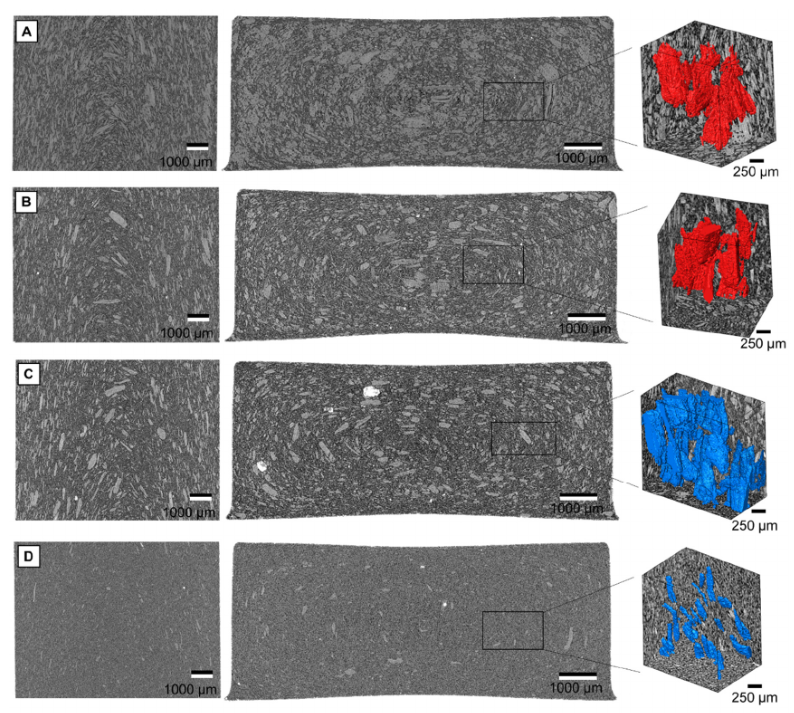
In this study, various wood material sources were used for the manufacture of wood-polymer composites (WPC). The materials were categorised as virgin wood particles (VWP), reprocessed WPC particles (RWP) and recycled thermoset composite particles (RCP) and derived from two virgin wood sources, three-layer particle boards, medium-density fibre boards (MDF) boards,or two different wood/polypropylene composites. All produced wood-polypropylene compounds contained 60% wood material and were manu... Read more
Kim Christian Krause, D, Philipp Sauerbier, Tim Koddenberg and Andreas Krause
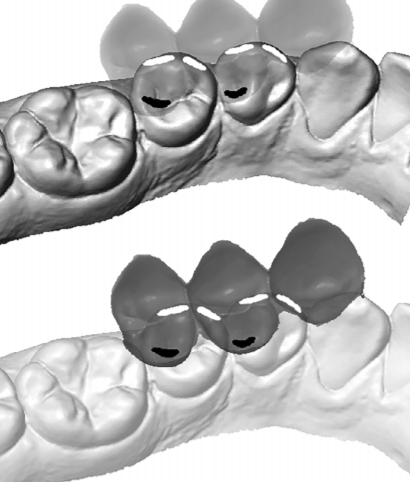
Variation of 3D outer and inner crown morphology in modern human mandibular premolars
This study explores the outer and inner crown of lower third and fourth premolars (P3, P4) by analyzing the morphological variation among diverse modern human groups.
We studied three‐dimensional models of the outer enamel surface and the enamel–dentine junction (EDJ) from μCT datasets of 77 recent humans using both an assessment of seven nonmetric traits and a standard geometric morphometric (GM) analysis. For the latter, the dental crown was represented by ... Read more
Viktoria A. Krenn, Cinzia Fornai, Lisa Wurm, Fred L. Bookstein, Martin Haeusler, Gerhard W. Weber
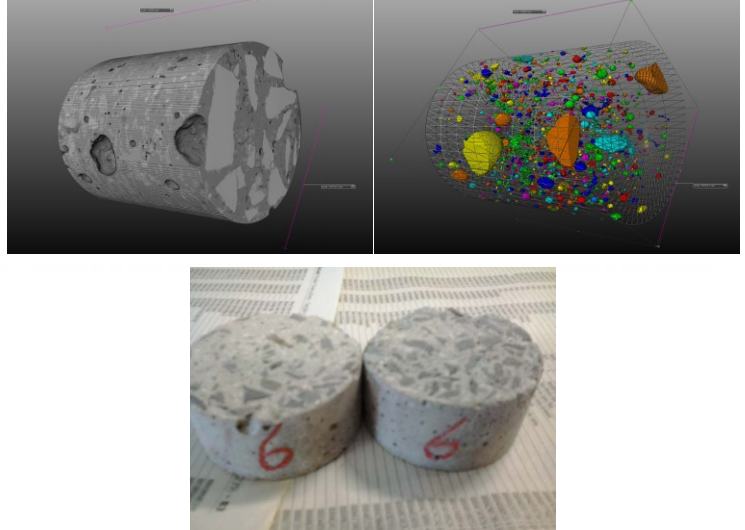
The thermal conductivity values of ordinary concrete can be adjusted to those prescribed in constructions by entraining air bubbles to reduce the density of concrete in order to achieve good thermal insulation. This paper concerns the analysis of air bubble distribution in concrete obtained by micro X-ray µCT (computed tomography) and correlates it with its thermal conductivity (k). (…) The results show that air-entrainment leads to viable use of this material as sealer to achieve good... Read more
A. P. Peruzzi, J. A. Rossignolo and H. Kahn
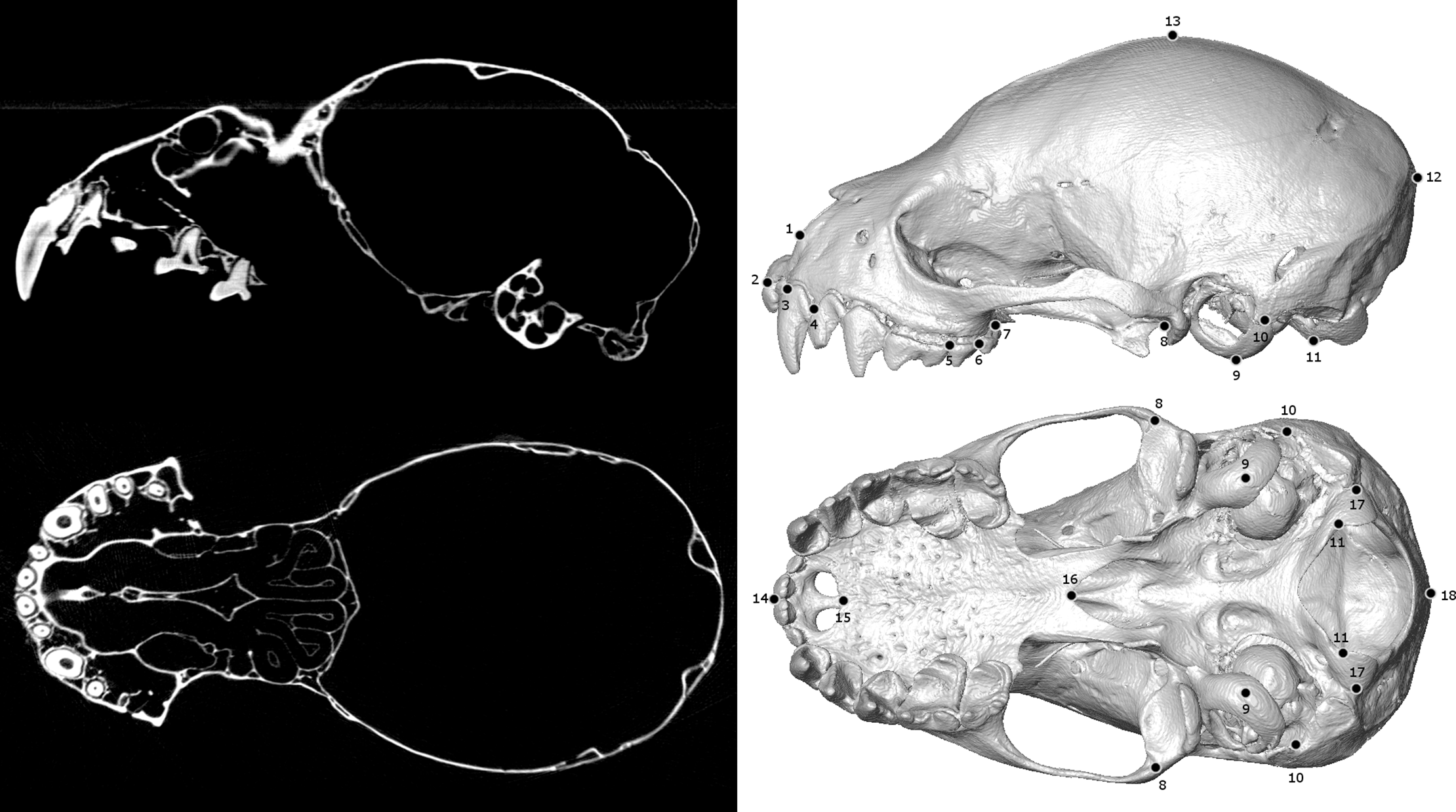
Biological specimens are primary records of organismal ecology and history. As such, museum collections are invaluable repositories for testing ecological and evolutionary hypotheses across the tree of life. Digitizing and broadly sharing the phenotypic data from these collections serves to expand the traditional reach of museums, enabling widespread data sharing, collaboration, and education at an unprecedented scale. In recent years, μCT-scanning has been adopted as one way for efficiently... Read more
Jeff J. Shi, Erin P. Westeen, Daniel L. Rabosky
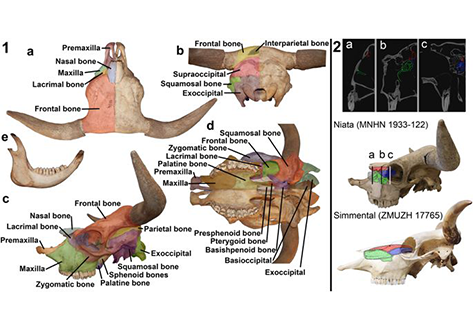
The Niata was a cattle variety from South America that figured prominently in writings on evolution by Charles Darwin. Its shortened head and other aspects of its unusual morphology have been subject of unsettled discussions since Darwin’s time. Here, we examine the anatomy, cranial shape, skull biomechanics, and population genetics of the Niata. Our results show that the Niata was a viable variety of cattle and exhibited anatomical differences to known chondrodysplastic forms. In cranial s... Read more
Kristof Veitschegger, Laura A. B. Wilson, Beatrice Nussberger, Glauco Camenisch, Lukas F. Keller, Stephen Wroe, Marcelo R. Sánchez-Villagra
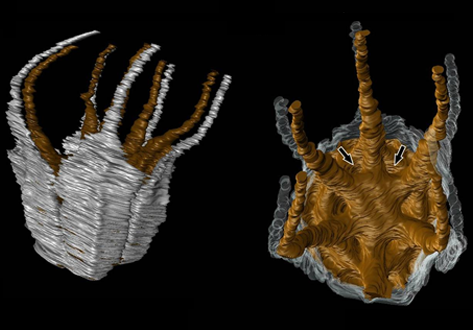
Angiosperm-dominated floras of the Late Cretaceous are essential for understanding the evolutionary, ecological, and geographic radiation of flowering plants.
The Late Cretaceous–early Paleogene Deccan Intertrappean Beds of India contain angiosperm-dominated plant fossil assemblages known from multiple localities in central India. Numerous monocots have been documented from these assemblages, providing a window into an important but poorly understood time in their diversification. On... Read more
Kelly K.S. Matsunaga, Selena Y. Smith, Steven R. Manchester, Dashrath Kapgate, Deepak Ramteke, Amin Garbout, and Herminso Villarraga-Gómez
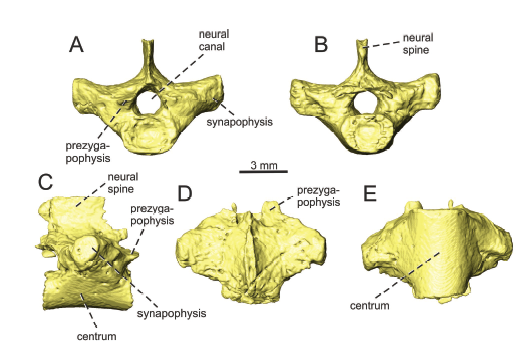
An eosauropterygian skeleton found in the Middle Triassic (upper Anisian) Gutenstein Formation of the Fatric Unit (Demänovská dolina Valley, Low Tatra Mountains, Slovakia) represents the earliest known occurrence of marine tetrapods in the Western Carpathians. The specimen represents a partly articulated portion of the postcranial skeleton (nine dorsal vertebrae, coracoid, ribs, gastral ribs, pelvic girdle, femur and one zeugopodial element). It is assigned to the Pachypleurosauria, more pr... Read more
ANDREJ ČERŇANSKÝ, NICOLE KLEIN, JÁN SOTÁK, MÁRIO OLŠAVSKÝ, JURAJ ŠURKA, and PAVEL HERICH
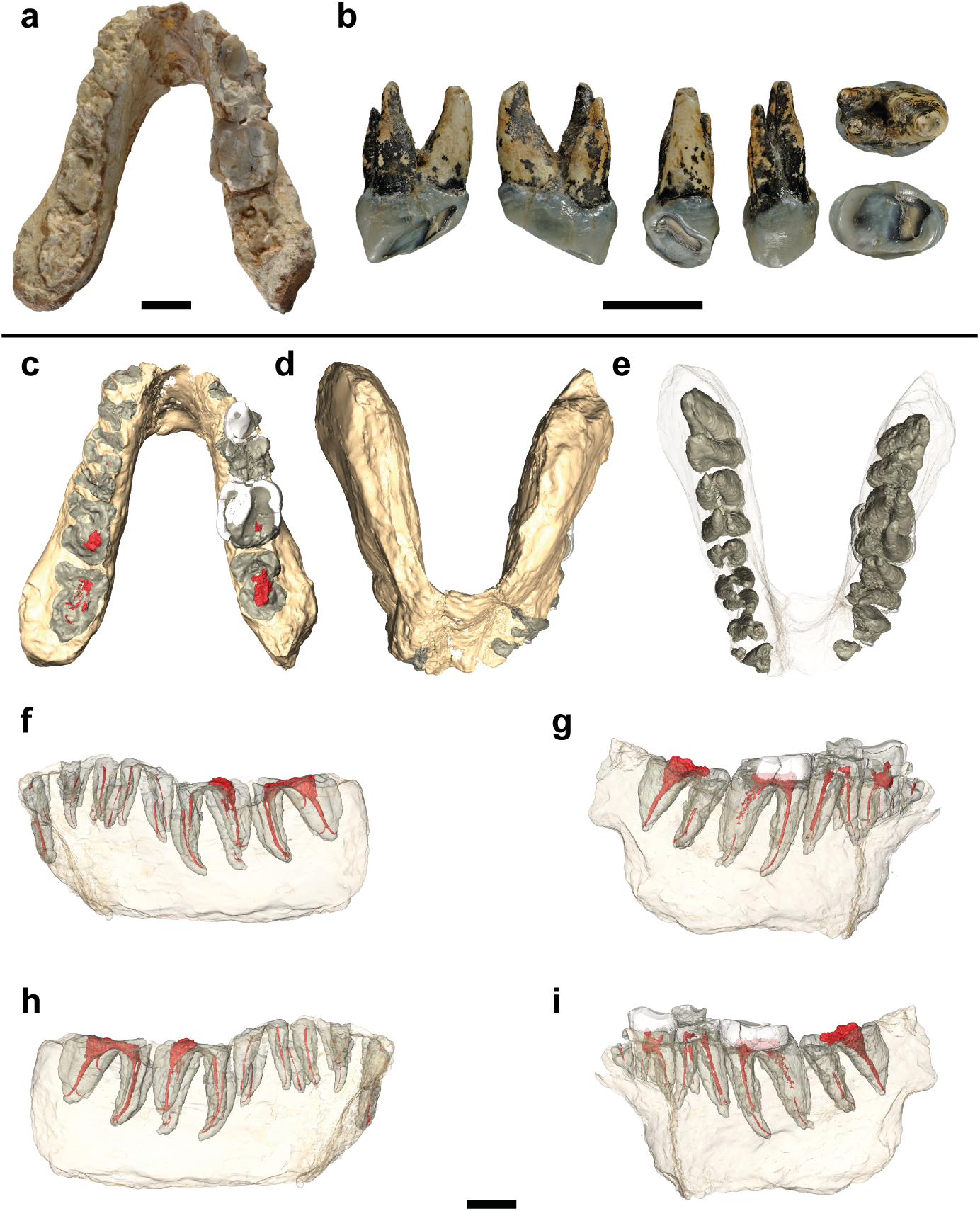
Potential hominin affinities of Graecopithecus from the Late Miocene of Europe
The split of our own clade from the Panini is undocumented in the fossil record. To fill this gap we investigated the dentognathic morphology of Graecopithecus freybergi from Pyrgos Vassilissis (Greece) and cf. Graecopithecus sp. from Azmaka (Bulgaria), using new μCT and 3D reconstructions of the two known specimens. Pyrgos Vassilissis and Azmaka are currently dated to the early Messinian at 7.175 Ma and 7.24 Ma. Mainly based on its external preservation and the previou... Read more
Jochen Fuss, Nikolai Spassov, David R. Begun, Madelaine Böhme
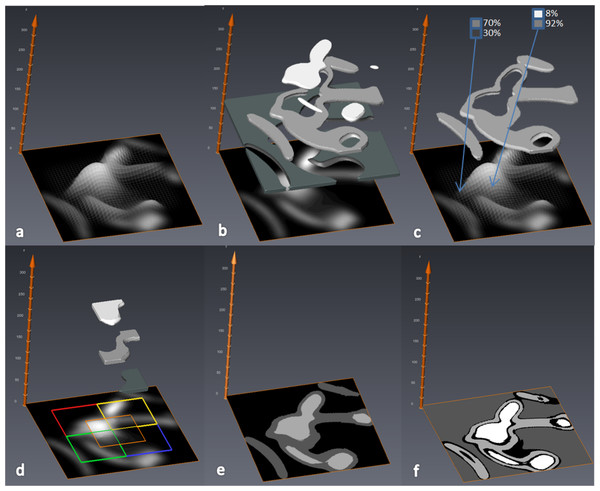
MIA-Clustering: a novel method for segmentation of paleontological material
Paleontological research increasingly uses high-resolution micro-computed tomography (μCT) to study the inner architecture of modern and fossil bone material to answer important questions regarding vertebrate evolution. This non-destructive method allows for the measurement of otherwise inaccessible morphology. Digital measurement is predicated on the accurate segmentation of modern or fossilized bone from other structures imaged in μCT scans, as errors in segmentation can result in inaccur... Read more
Christopher J. Dunmore, Gert Wollny, Matthew M. Skinner
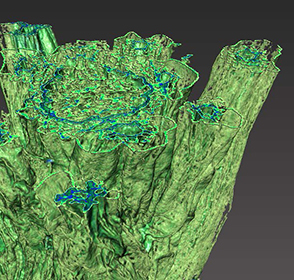
Unilever uses Avizo software to visualize and understand food and detergent structures
Food and detergent products are composed of complex micro structures. With modern microscopic techniques we can make them visible. The microstructure greatly affects macroscopic properties such as appearance, taste, mouth feel and solubility. Making these structures visible and quantifying them is essential to the development of products with optimal product properties. A broad range of imaging techniques is used to visualize microstructure elements at different length scales. For example, X-... Read more
Gerard van Dalen, Unilever R&D Vlaardingen (The Netherlands)
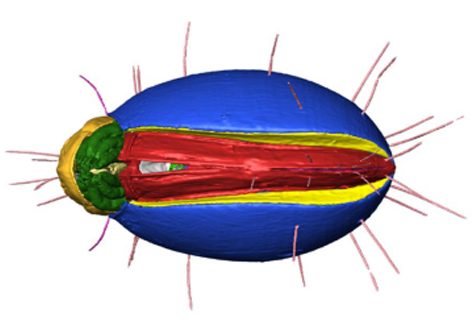
The NOVA project: maximizing beam time efficiency through synergistic analyses of SRµCT data
Beamtime and resulting SRμCT data are a valuable resource for researchers of a broad scientific community in life sciences. Most research groups, however, are only interested in a specific organ and use only a fraction of their data. The rest of the data usually remains untapped. By using a new collaborative approach, the NOVA project (Network for Online Visualization and synergistic Analysis of tomographic data) aims to demonstrate, that more efficient use of the valuable beam time is possi... Read more
The international society for optics and photonics (SPIE)